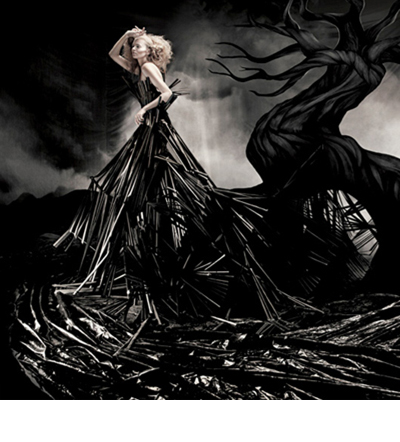
Click to see full image

“I never like to shoot what’s shown to me – I only use that as a guideline” remarks photographer and advertising graphic designer Tejal Patni about his style of work. Patni’s high fashion editorials expose a dark surreal reality reminiscent of Tim Burton’s taste for gothic allure. Utilizing teams of stylists, set designers, makeup artists and photo retouchers Tejal’s photography blurs the lines of conventional photographer remixing fantasy and high fashion in a way that make’s one stop and question “ Hey, how’d he do that?” Splash, a fashion retailer from Dubai took notice, commissioning the young indian photographer to create the images to accompany the limited edition 2011 calendar for their international website. To help him articulate his gothic fairytales, Patni partnered with New York photographer Kirstan Hermans, who specializes in theatre costumes. The result in a nearly monochromatic future with some seriously dark undertones; a spectacular vision of a post-apocalyptic theatricality.
(more…)
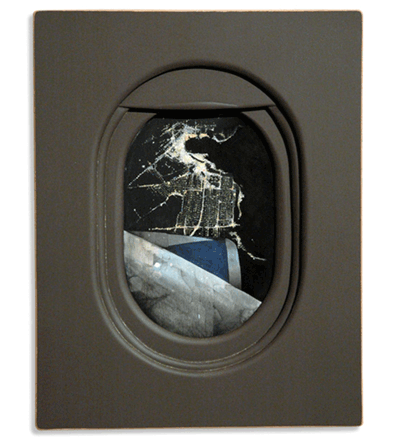

Painter and Designer Jim Darling has a fresh take on the view from an airplane window. His six paintings, display the classic airplane window complete with pull down shade, rendered in a classic trompe d’oeil technique of the old masters. However within the window are wonderfully abstracted scenes capture the essence of patchy farmlands, nighttime aerials of lit cities and skylines. Darling’s graphic design background includes work with MTV, Coor’s light and Cambell’s Chicken noodle soup, each picture strongly rooted in his ability to draw. His illustrative mastery and graphic have pulled together in these fun oil on wood panels. The airplane series is part of a larger collection exhibited at Open Space in Beacon NY. Other paintings in the collection are themed with aircraft flight, and include a few humorous yet artful caricatures of passengers. Jim Darling definitely has created a spirited way of looking at the world.
(more…)
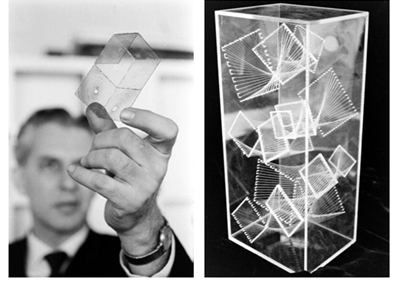

The late Fritz Goro inventor of macro photography saw his goal as “making visible the world that lies between the microscope and the naked eye.” Turning to photography after the Nazi’s forced him out of Germany, Fritz Goro started a career with LIFE Magazine, shooting scientific photoessays and was the magazine’s scientific and medical specialist for twenty-seven years. Fritz Goro photographed many scientific breakthroughs and discoveries including the creation of penicillin as well as the separation of the isotopes of uranium and plutonium that made the atomic bomb. Chairman of the board of Scientific American, then science editor at Life Mr. Gerard Piel said of Goro, ”it was his artistry and ingenuity that made photographs of abstractions, of the big ideas from the genetic code to plate tectonics.” Fritz Goro’s legacy lives on in the beautiful geometric black and white images of America’s biggest scientific breakthroughs of the twentieth century.
(more…)
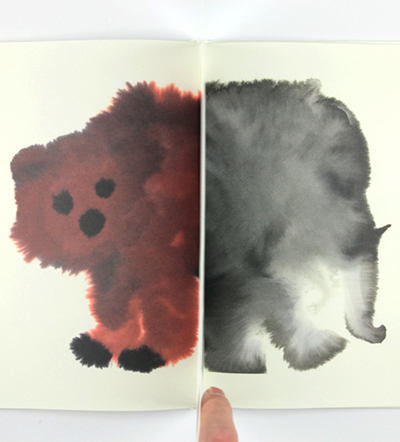

Vivid watercolors seep into the page and emerge with life. Page by page a menagerie of wild creatures reveal themselves: a baby fawn, a pig, a parrot and many more, each one rendered in the same colorful wet wash technique. Rop Van Mierlo’s book, Wilde Dieren (Wild Animals), showcase this illustrator, graphic designer and animator’s talent in all fields. Each critter is embodied with the sensation of watercolors soaking into the paper. Displayed with immediacy, the animals spring to life from their minimal white background. Van Mierlo attended the Design Academy in Eindhoven studying “Man and Communication,” as well as the Willem de Kooning Academy, where he studied Graphic Design. His modern education has taught him to “ask questions and not give answers” and has yielded impressive work. The red McCaw’s wings look blotchy and soaked and the tiger seems to drip his strips, each creature taking on a new kind of life. This 34 page book is a unique living experience, every beast as absorbing as the next.
Rop Van Mierlo
(more…)
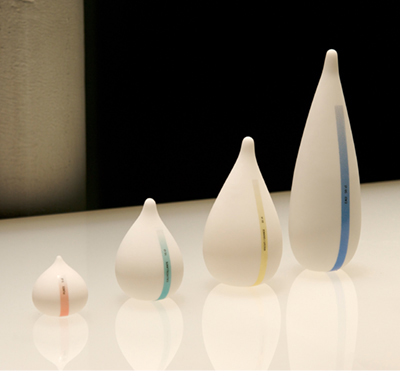
Image courtesy of Phase One Photography

A team of science researchers and designers has developed a prototype for a plant-based container to replace the much-maligned plastic water bottle. Led by designer Francois Azambourg and Harvard University’s Donald Ingber, whose work focuses on biologically inspired engineering, the initiative to completely rethink the transport of water has resulted in this newly unveiled model after two years of experimentation. The project was recently displayed at the research and exhibition space Le Laboratoire in Paris, including documentation of the entire design process, both the breakthroughs and the stumbling points as the team sought the proper materials and composition.
The pouch-like invention finally arrived upon represents a clear departure in design from the common bottle. Made from brown algae, this new creation functions as a more sustainable container than the plastic sort made from petroleum. It’s also closer to nature in its form and function, echoing the membrane of the biological cell. In the quest to preserve the natural world then, the message appears simple: borrow from it.
(more…)
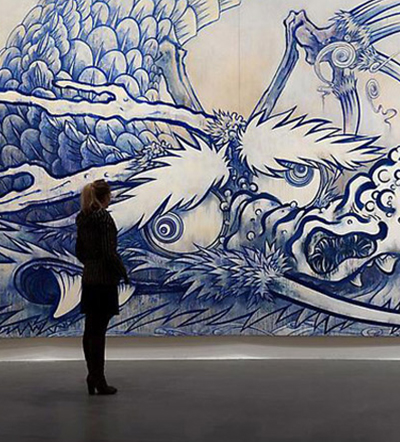
(Click to enlarge)

Artist, curator, entrepreneur, and observer of Japanese society, Takashi Murakami is, without hesitation, one of the most respected contemporary artists today. His solo show will be on display at
Gagosian Gallery in Rome from until January 15, 2011. The exhibit consists two epic paintings: ”Dragon in Clouds – Red Mutation” and “Dragon in Clouds – Indigo Blue.” The paintings are each comprised nine panels and measure an awe inspiring eighteen meters long. These enormous red and blue monochromatic paintings are a step in a new direction from Murakami’s usual techno inspired, color saturated work. Rendered in the artist’s distinct style “Superflat,” Murakami employs classical Japanese painting techniques to depict anime and pop culture. For the purpose of this exhibition, Murakami’s draws inspiration from inventive 18th century Japanese artist, Soga Shōhaku. Shōhaku‘s cloud and dragon paintings, called “Unryūzu” were hung in Japanese Buddhist temples, embedding a sense of strength in the culture of the Japanese people. Murakami’s giant re imaginings of these rich iconic images of dragons underscore the same sense of strength only this time in mammoth proportions.
(more…)
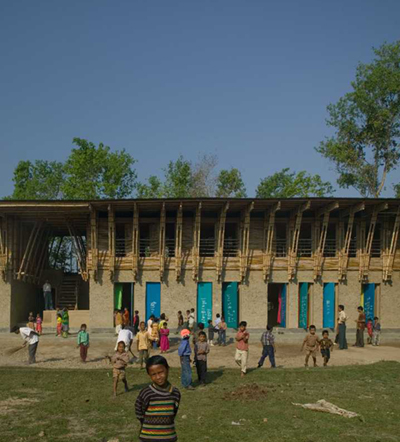
METI – Handmade School. Rudrapur, Bangladesh. 2004-06. By Anna Heringer and Eike Roswag. Image: Kurt Hörbst (Click to enlarge)

Over the last eight decades the architecture department at the Museum of Modern Art made its reputation by promoting avant-garde European and American work, mounting exhibits that defined and championed movements like the International Style, Postmodernism, and Deconstructivism. So MoMA’s new architecture exhibit “Small Scale, Big Change,” which focuses on modestly scaled, community-centered projects around the world, marks a dramatic shift in their mission.
It also serves as a potent call to arms. Architects everywhere today are challenged by economic instability and environmental concerns and, at the tail end of modernism, searching for a meaningful, unified language with which to build. The projects at MoMA suggest that the solution isn’t a new set of forms, but a new way to conceive and orchestrate building and infrastructure projects.
The eleven projects on display are truly global, and include works in Africa, South America, South Asia, and the Middle East. None was designed by a “starchitect,” and all were implemented in close collaboration with civic and community groups. Most significantly, each project grew out of real practical and social needs. One of the most powerful designs in the show is an American house prototype that costs only twenty thousand dollars. Two other projects, a primary school in Bangladesh and a linear park for Rio de Janeiro, were developed in direct response to community requests.
(more…)

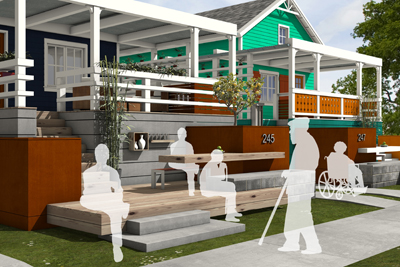


The real winners of the 2010 Natural Talent Design Competition are likely to be the residents of the Broadmoor section of New Orleans, a low-lying neighborhood flooded after Hurricanes Katrina and Rita. That’s because the four innovative home designs selected as finalists in the contest will be built in that community in the coming months, bringing affordable, LEED platinum-certified, handicap accessible 800-square-foot houses to a place still badly in need of rebuilding five years after the storms. The designs, created by students and emerging professional architects, will be on view at the Greenbuild Expo in Chicago November 17-19, organized by the United States Green Building Council (USGBC). Once the houses are constructed and evaluated for energy conservation and other aspects of sustainability, a grand-prize winner will be chosen and announced at next year’s Expo. The lucky inhabitants of the soon-to-be-available houses will find rewards over the long term, as the structures are intended to be more efficient than typical homes, and thus reduce living costs.
Pictured with this posting are the houses designed by a group of recent Cornell graduates who have formed ZeroEnergy Design, an architecture and energy consulting firm. The group’s models, titled The Little Easy, feature storm water collection systems, wheelchair lifts for physically impaired occupants, and front porches that serve to tie the new houses to the surrounding properties.
(more…)

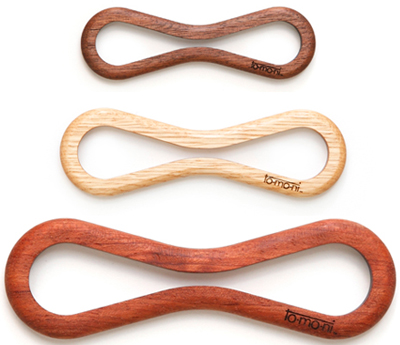


When industrial designer, Naoto Yoshida saw how much wood is wasted in the furniture-making process, he decided to give it a new life. The son of an award-winning furniture maker, Yoshida’s company to.mo.ni recycles piles of beautiful wood scraps — once used as firewood or thrown away — to make unique everyday objects. His latest design, WrapWrap, mixes old-world craft with technology, allowing you to adjust your obtrusive iPod headphone wires to the perfect length. WrapWrap comes in walnut, oak, rosewood, or wenge, and is also available in medium and large sizes for desk wires (think mouse and firewire cables) and thicker electrical cord management.
Mr. Yoshida hails from Asahikawa, Hokkaido, Japan — a region rich in woodcraft tradition. He is also the executive officer of mickle, a design collective of local craftsmen and artisans who focus on connecting the community with artists and their work.
(more…)
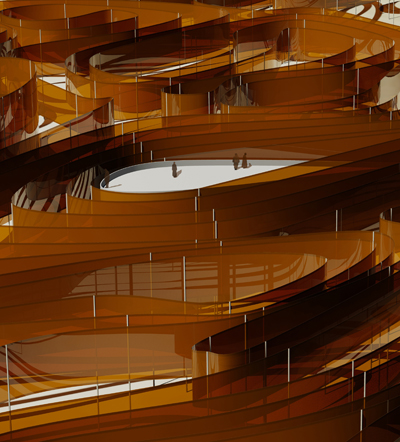
Images courtesy of Decker Yeadon

The dream of a clean energy future may seem as elusive as a desert mirage, but against the sandy backdrop of Ras Al Khor Wildlife Sanctuary in Dubai, the design team of Martina Decker and Peter Yeadon envisions what might be possible with the right materials and a vibrant imagination.
Light Sanctuary, a maze of auburn-tinted solar panel ribbons, may only exist as a concept for the moment; but the Decker Yeadon firm’s innovative plan for a photovoltaic installation could prove to be less a mirage than an oasis of clean energy generation. The design was created as a proposal for the Land Art Generator Initiative, a contest seeking environmental art projects that function as sources of renewable energy that are geared specifically toward one of three sites in the United Arab Emirates.
Though extremely ambitious, a fully realized, completely assembled version of Light Sanctuary is absolutely possible, according to Decker. Spread across nearly 100 acres, Decker and Yeadon’s sculptural energy plant would incorporate twenty-five miles worth of dye-sensitive solar cells that would collectively generate 4,592 megawatt-hours of energy each year. These flexible solar panels are a cutting-edge third generation photovoltaic technology, which makes use of the light-absorbing capacity of organic dyes derived from plants. Though the panels aren’t known to produce as much electricity as other solar technologies, they are most effective under higher temperatures, making the hot desert a prime location for the installation.
(more…)





 Facebook
Facebook Permalink
Permalink Digg
Digg Reddit
Reddit LinkedIn
LinkedIn StumbleUpon
StumbleUpon Tumblr
Tumblr













